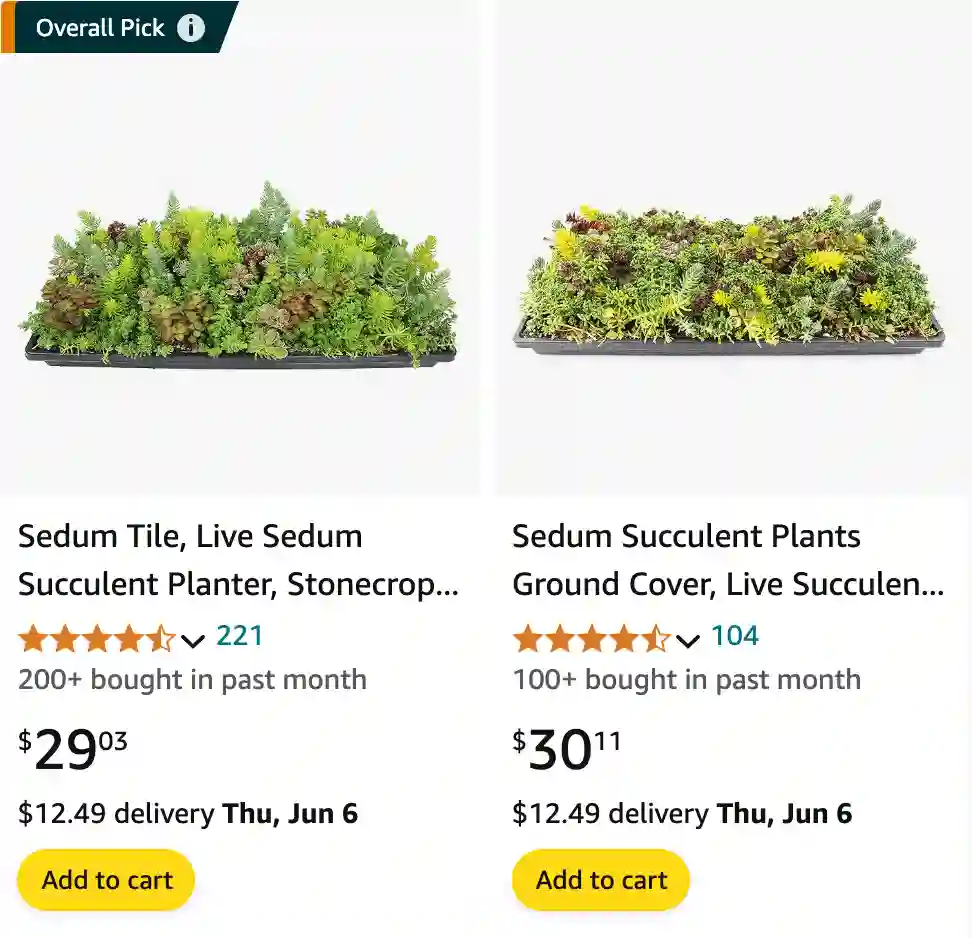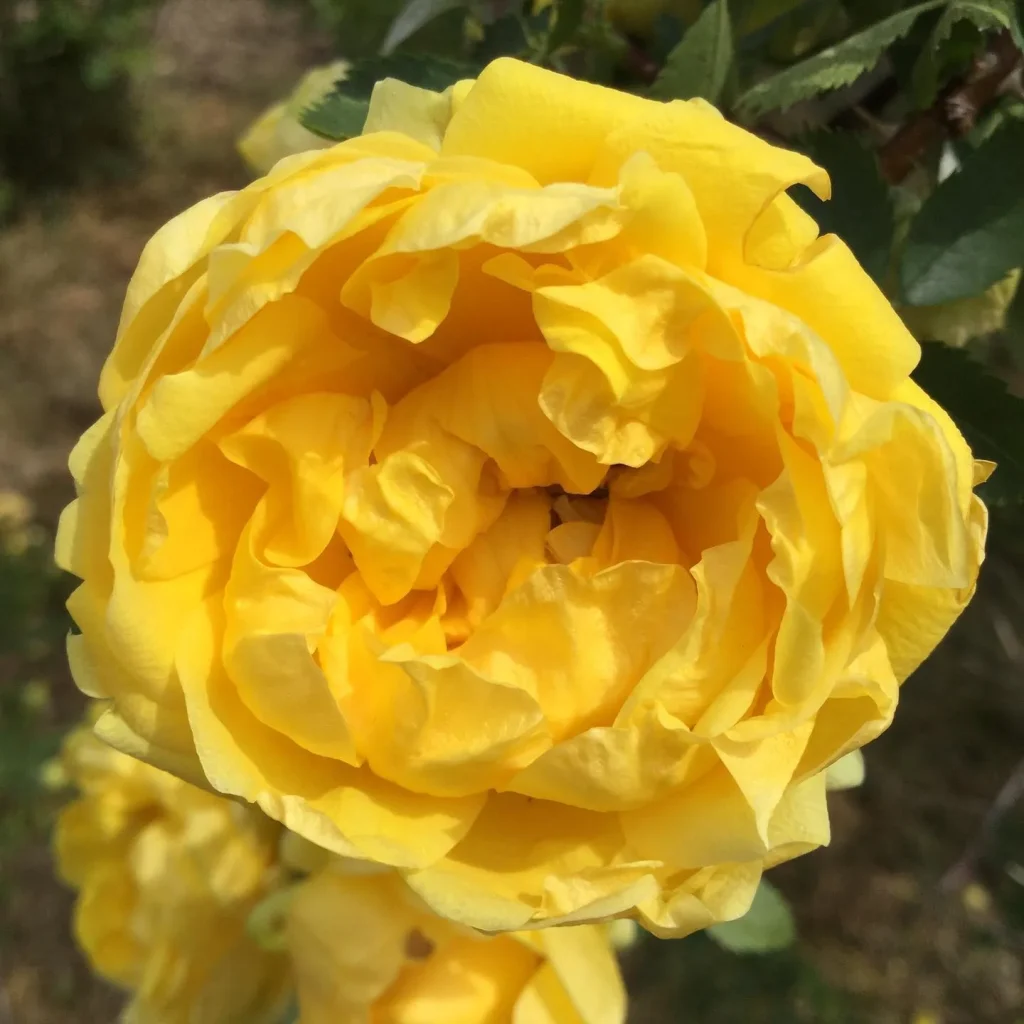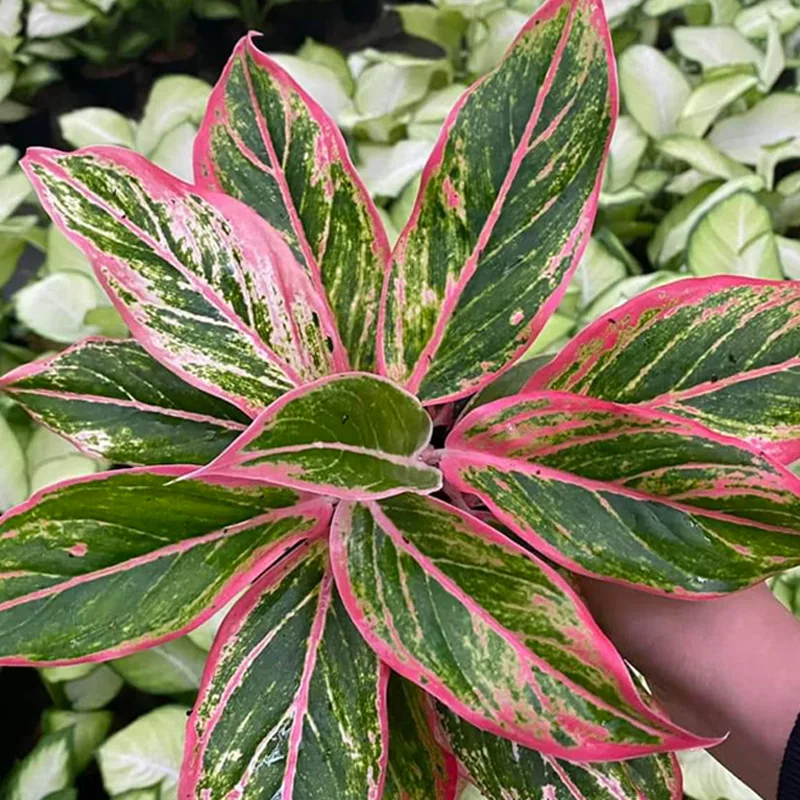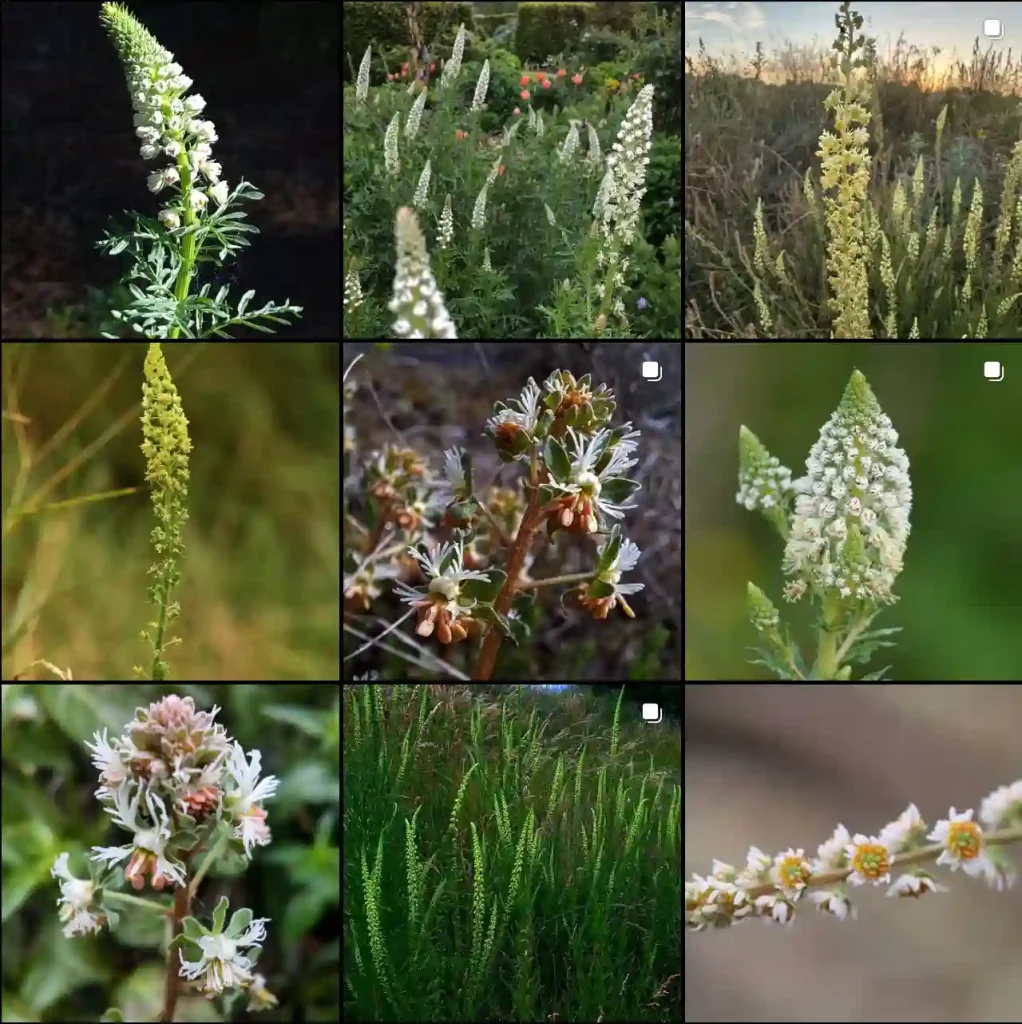
What Is Stonecrop?
Sedums, also known as stonecrop, have become a mainstay in my gardening adventures. These fascinating succulents boast a wide variety of shapes, sizes, and colors, making them a versatile addition to any planter or rock garden. But with so many varieties available, I understand there can be a lot to learn! In this guide, I’ll share my experiences and answer some of the most common questions about these captivating plants.
Is Sedum a Succulent?
Absolutely! Sedum belongs to the Crassulaceae family, known for its succulent members. These plants have fleshy leaves and stems that store water, allowing them to thrive in drier conditions. This characteristic makes sedums ideal for low-maintenance gardens and forgetful waterers (like myself, sometimes!).
Sedum species
- Sedum abchasicum Kolak. ex V.V.Byalt
- Sedum acaxee Art.Castro, H.Ávila & Gonz.-Bernal
- Sedum acre L.
- Sedum actinocarpum Yamam.
- Sedum adolphi Raym.-Hamet
- Sedum aetnense Tineo
- Sedum alamosanum S.Watson
- Sedum albomarginatum R.T.Clausen
- Sedum album L.
- Sedum alexanderi Eggli
- Sedum alfredi Hance
- Sedum allantoides Rose
- Sedum alpestre Vill.
- Sedum alsinifolium All.
- Sedum × amecamecanum Praeger
- Sedum andegavense (DC.) Desv.
- Sedum andinum Ball
- Sedum anglicum Huds.
- Sedum annuum L.
- Sedum apoleipon ‘t Hart
- Sedum aquilanum L.Gallo & F.Conti
- Sedum arenarium Brot.
- Sedum argunense Galushko
- Sedum arisanense Yamam.
- Sedum assyriacum Boiss.
- Sedum atratum L.
- Sedum australe Rose
- Sedum aytacianum J.Metzg.
- Sedum backebergii Poelln.
- Sedum baileyi Praeger
- Sedum baleensis M.G.Gilbert
- Sedum balfourii Raym.-Hamet
- Sedum barbeyi Raym.-Hamet
- Sedum barcense Maire & Weiller
- Sedum batallae Barocio
- Sedum batesii Hemsl.
- Sedum × battandieri Maire
- Sedum beauverdii Raym.-Hamet
- Sedum bellum Praeger
- Sedum bergeri Raym.-Hamet
- Sedum berillonanum Raym.-Hamet
- Sedum berunii U.P.Pratov
- Sedum bhattacharyyae R.Manik., N.B.Singh & S.K.Srivast.
- Sedum blepharophyllum Fröd.
- Sedum boninense Yamam. ex Tuyama
- Sedum bonnieri Raym.-Hamet
- Sedum booleanum B.L.Turner
- Sedum borissovae Balk.
- Sedum borschii (R.T.Clausen) R.T.Clausen
- Sedum botterii Hemsl.
- Sedum bourgaei Hemsl.
- Sedum brachetii J.Reyes, Islas & O.González
- Sedum brachyrhinchum Yamam.
- Sedum bracteatum Viv.
- Sedum brevifolium DC.
- Sedum brissemoretii Raym.-Hamet
- Sedum bulbiferum Makino
- Sedum burrito Moran
- Sedum caducum R.T.Clausen
- Sedum caeruleum L.
- Sedum calcaratum Rose
- Sedum calcicola B.L.Rob. & Greenm.
- Sedum callichroum Boiss.
- Sedum candolleanum G.López
- Sedum carinatifolium (R.T.Clausen) Pérez-Calix
- Sedum carnegiei Raym.-Hamet
- Sedum caroli-henrici Kit Tan
- Sedum catorce G.L.Nesom
- Sedum celatum Fröd.
- Sedum celiae Raym.-Hamet
- Sedum cepaea L.
- Sedum cespitosum (Cav.) DC.
- Sedum chauveaudii Raym.-Hamet
- Sedum chazaroi P.Carrillo & J.A.Lomelí
- Sedum chihuahuense S.Watson
- Sedum chingtungense K.T.Fu
- Sedum chloropetalum R.T.Clausen
- Sedum chrysicaulum J.A.McDonald
- Sedum chuhsingense K.T.Fu
- Sedum churchillianum Robyns & Boutique
- Sedum cirenianum S.S.Ying
- Sedum citrinum Zika
- Sedum clausenii Pérez-Calix
- Sedum clavatum R.T.Clausen
- Sedum clavifolium Rose
- Sedum cockerellii Britton
- Sedum commixtum Moran & Hutchison
- Sedum compactum Rose
- Sedum concarpum Fröd.
- Sedum confertiflorum Boiss.
- Sedum confusum Hemsl.
- Sedum constantini Raym.-Hamet
- Sedum conzattii Rose
- Sedum copalense Kimnach
- Sedum cormiferum R.T.Clausen
- Sedum correptum Fröd.
- Sedum corymbosum Grossh.
- Sedum corynephyllum Fröd.
- Sedum craigii R.T.Clausen
- Sedum crassularia Raym.-Hamet
- Sedum creticum C.Presl
- Sedum cupressoides Hemsl.
- Sedum cuspidatum Alexander
- Sedum cymatopetalum Fröd.
- Sedum cyprium A.K.Jacks. & Turrill
- Sedum daigremontianum Raym.-Hamet
- Sedum danjoense Takuro Ito, H.Nakan. & Kokub.
- Sedum danxiacola S.Y.Meng & B.Chen
- Sedum dasyphyllum L. Plant FAQs: Sedum Dasyphyllum
- Sedum debile S.Watson
- Sedum decipiens (Baker) Thiede & ‘t Hart
- Sedum dendroideum Moc. & Sessé ex DC.
- Sedum × derbezii Petitm.
- Sedum didymocalyx Fröd.
- Sedum dielsii Raym.-Hamet
- Sedum diffusum S.Watson
- Sedum diminutum (R.T.Clausen) G.L.Nesom
- Sedum dimorphophyllum K.T.Fu & G.Y.Rao
- Sedum dispermum Fröd.
- Sedum divergens S.Watson
- Sedum dongzhiense D.Q.Wang & Y.L.Shi
- Sedum dormiens Cuevas, Pérez-Calix & P.Carrillo
- Sedum drymarioides Hance
- Sedum dugueyi Raym.-Hamet
- Sedum dulcinomen G.L.Nesom
- Sedum eastwoodiae (Britton) A.Berger
- Sedum ebracteatum Moc. & Sessé ex DC.
- Sedum ecalcaratum H.J.Wang & P.S.Hsu
- Sedum edwardsii (R.T.Clausen) B.L.Turner
- Sedum elatinoides Franch.
- Sedum elburzense Akhiani & Assadi
- Sedum emarginatum Migo
- Sedum × engadinense Brügger
- Sedum engleri Raym.-Hamet
- Sedum epidendrum Hochst. ex A.Rich.
- Sedum erici-magnusii Fröd.
- Sedum eriocarpum Sm.
- Sedum erlangerianum Engl.
- Sedum ermenekensis Yıld. & Dinç
- Sedum × erraticum Brügger
- Sedum erythrospermum Hayata
- Sedum euxinum ‘t Hart & Alpinar
- Sedum fanjingshanense C.D.Yang & X.Yu Wang
- Sedum farinosum Lowe
- Sedum feddei Raym.-Hamet
- Sedum fedtschenkoi Raym.-Hamet
- Sedum filipes Hemsl.
- Sedum fischeri Raym.-Hamet
- Sedum flaccidum Rose
- Sedum flavidum (Denton) B.L.Wilson & Zika
- Sedum formosanum N.E.Br.
- Sedum forreri Greene
- Sedum forrestii Raym.-Hamet
- Sedum fragrans ‘t Hart
- Sedum franchetii Grande
- Sedum frutescens Rose
- Sedum × fuereri Wein
- Sedum fui G.D.Rowley
- Sedum furfuraceum Moran
- Sedum fuscum Hemsl.
- Sedum fusiforme Lowe
- Sedum gagei Raym.-Hamet
- Sedum gattefossei Batt. & Jahand.
- Sedum giajae Raym.-Hamet
- Sedum glabrum (Rose) Praeger
- Sedum glaebosum Fröd.
- Sedum glassii Pérez-Calix
- Sedum glaucophyllum R.T.Clausen
- Sedum globuliflorum R.T.Clausen
- Sedum glomerifolium M.G.Gilbert
- Sedum goldmanii (Rose) Moran
- Sedum gracile C.A.Mey.
- Sedum grammophyllum Fröd.
- Sedum grandipetalum Fröd.
- Sedum grandyi Raym.-Hamet
- Sedum greggii Hemsl.
- Sedum griffithii C.B.Clarke
- Sedum grisebachii Boiss. & Heldr.
- Sedum griseum Praeger
- Sedum guadalajaranum S.Watson
- Sedum guatemalense Hemsl.
- Sedum gypsicola Boiss. & Reut.
- Sedum gypsophilum B.L.Turner
- Sedum hakonense Makino
- Sedum hangzhouense K.T.Fu & G.Y.Rao
- Sedum havardii Rose
- Sedum heckelii Raym.-Hamet
- Sedum hemsleyanum Rose
- Sedum hengduanense K.T.Fu
- Sedum henrici-roberti Raym.-Hamet
- Sedum hernandezii J.Meyrán
- Sedum hintonii R.T.Clausen
- Sedum hintoniorum B.L.Turner
- Sedum hirsutum All.
- Sedum hispanicum L.
- Sedum hoi X.F.Jin & B.Y.Ding
- Sedum holei Raym.-Hamet
- Sedum holopetalum Fröd.
- Sedum hultenii Fröd.
- Sedum humifusum Rose
- Sedum hutchisonii Kimnach & J.E.Low ex Pino & Cieza
- Sedum hypogaeum J.Reyes, Brachet & O.González
- Sedum ichangensis Y.B.Wang
- Sedum ignescens Pino & Montesinos
- Sedum incarum (Ball) Pino
- Sedum ince ‘t Hart & Alpinar
- Sedum inconspicuum Hand.-Mazz.
- Sedum isidorum Pino
- Sedum jaccardianum Maire & Wilczek
- Sedum jahandiezii Batt.
- Sedum jaliscanum S.Watson
- Sedum japonicum Siebold ex Miq.
- Sedum jarocho P.Carrillo & Jimeno-Sevilla
- Sedum jerzedowskii Pérez-Calix
- Sedum jinglanii Yan S.Huang & Q.Fan
- Sedum jiuhuashanense P.S.Hsu & H.J.Wang
- Sedum jiulungshanense Y.C.Ho
- Sedum jordanianum Dobignard
- Sedum jujuyense Zardini
- Sedum jurgensenii (Hemsl.) Moran
- Sedum kawaraense Takuro Ito & Kanemitsu
- Sedum keniense Y.D.Zhou, G.W.Hu & Q.F.Wang
- Sedum kiangnanense D.Q.Wang & Z.F.Wu
- Sedum kiersteadiae B.L.Wilson & R.E.Brainerd
- Sedum kimnachii V.V.Byalt
- Sedum kingdonii H.Ohba
- Sedum kotschyanum Boiss.
- Sedum koyuncui Yıld.
- Sedum kristenii J.Reyes, O.González & Etter
- Sedum kuntsunianum X.F.Jin, S.H.Jin & B.Y.Ding
- Sedum kwanwuense H.W.Lin, J.C.Wang & C.T.Lu
- Sedum laconicum Boiss. & Heldr.
- Sedum lagascae Pau
- Sedum lahovarianum Raym.-Hamet
- Sedum lampusae (Kotschy) Boiss.
- Sedum lanceolatum Torr.
- Sedum lancerottense R.P.Murray
- Sedum latentibulbosum K.T.Fu & G.Y.Rao
- Sedum latifilamentum R.T.Clausen
- Sedum laxum (Britton) A.Berger
- Sedum leblancae Raym.-Hamet
- Sedum leibergii Britton
- Sedum lenkoranicum Grossh.
- Sedum leptophyllum Fröd.
- Sedum leucocarpum Franch.
- Sedum liebmannianum Hemsl.
- Sedum lineare Thunb.
- Sedum lipingense R.B.Zhang, D.Tan & R.X.Wei
- Sedum litoreum Guss.
- Sedum longifuniculatum K.T.Fu
- Sedum longipes Rose
- Sedum longuetae Raym.-Hamet
- Sedum longyanense K.T.Fu
- Sedum luchuanicum K.T.Fu
- Sedum lucidum R.T.Clausen
- Sedum lumholtzii B.L.Rob. & Fernald
- Sedum lungtsuanense S.H.Fu
- Sedum luteoviride R.T.Clausen
- Sedum lutzii Raym.-Hamet
- Sedum lydium Boiss.
- Sedum macdonaldii G.L.Nesom
- Sedum macdougallii Moran
- Sedum madrense S.Watson
- Sedum magae Raym.-Hamet
- Sedum magellense Ten.
- Sedum magniflorum K.T.Fu
- Sedum maireanum Sennen
- Sedum makinoi Maxim.
- Sedum marmorense Otting & R.E.Brainerd
- Sedum matsuense C.T.Lu & W.Yu Wang
- Sedum maurum Humbert & Maire
- Sedum melanantherum DC.
- Sedum mellitulum Rose
- Sedum mendozae (Glass & Cházaro) V.V.Byalt
- Sedum mesoamericanum P.Carrillo & Pérez-Farr.
- Sedum mexicanum Britton
- Sedum meyeri-johannis Engl.
- Sedum meyranianum J.Metzg.
- Sedum microcarpum (Sm.) Schönland
- Sedum microsepalum Hayata
- Sedum microstachyum (Kotschy) Boiss.
- Sedum millspaughii Raym.-Hamet
- Sedum minimum Rose
- Sedum mocinoanum Pérez-Calix
- Sedum modestum Ball
- Sedum moniliforme I.García & Costea
- Sedum monregalense Balb.
- Sedum mooneyi M.G.Gilbert
- Sedum moranense Kunth
- Sedum moranii R.T.Clausen
- Sedum morganianum E.Walther
- Sedum morrisonense Hayata
- Sedum mucizonia (Ortega) Raym.-Hamet
- Sedum mukojimense Takuro Ito
- Sedum multicaule Wall. ex Lindl.
- Sedum multiceps Coss. & Durieu
- Sedum muscoideum Rose
- Sedum muyaicum K.T.Fu
- Sedum nagasakianum (H.Hara) H.Ohba
- Sedum nanchuanense K.T.Fu & G.Y.Rao
- Sedum nanifolium Fröd.
- Sedum nanlingense Yan Liu & C.Y.Zou
- Sedum nanum Boiss.
- Sedum napiferum Peyr.
- Sedum naviculare Rose
- Sedum neovolcanicum Pérez-Calix & I.García
- Sedum nevadense Coss.
- Sedum nevii A.Gray
- Sedum niveum Davidson
- Sedum nokoense Yamam.
- Sedum nothodugueyi K.T.Fu
- Sedum nudum Aiton
- Sedum nuttallii Torr. & E.James ex Eaton
- Sedum oaxacanum Rose
- Sedum obcordatum R.T.Clausen
- Sedum oblanceolatum R.T.Clausen
- Sedum obtrullatum K.T.Fu
- Sedum obtusatum A.Gray
- Sedum obtusipetalum Franch.
- Sedum ocuilense J.Meyrán
- Sedum oligocarpum Fröd.
- Sedum oligospermum Maire
- Sedum onychopetalum Fröd.
- Sedum orbatum Moran & J.Meyrán
- Sedum oreades (Decne.) Raym.-Hamet
- Sedum oreganum Nutt.
- Sedum oregonense (S.Watson) M.E.Peck
- Sedum oteroi Moran
- Sedum oxycoccoides Rose
- Sedum oxypetalum Kunth
- Sedum pacense J.Meyrán
- Sedum pachucense (C.H.Thomps.) Praeger
- Sedum pachyphyllum Rose
- Sedum pagetodes Fröd.
- Sedum pallidum M.Bieb.
- Sedum palmeri S.Watson
- Sedum pampaninii Raym.-Hamet
- Sedum papillicaulum G.L.Nesom
- Sedum paradisum (Denton) Denton ex B.L.Wilson
- Sedum parviflorum S.S.Ying
- Sedum parvisepalum Yamam.
- Sedum parvum Hemsl.
- Sedum patens Zika
- Sedum × patrickii ‘t Hart
- Sedum pedicellatum Boiss. & Reut.
- Sedum pentandrum (Sharsm.) ined.
- Sedum pentapetalum Boriss.
- Sedum pentastamineum R.T.Clausen
- Sedum perezdelarosae Jimeno-Sevilla
- Sedum perpusillum Hook.f. & Thomson
- Sedum perrotii Raym.-Hamet
- Sedum peruvianum A.Gray
- Sedum phyllanthum H.Lév. & Vaniot
- Sedum piaxtlaense J.Reyes, Etter & Kristen
- Sedum piloshanense Fröd.
- Sedum planifolium K.T.Fu
- Sedum platysepalum Franch.
- Sedum plumbizincicola X.H.Guo & S.B.Zhou ex L.H.Wu
- Sedum polystriatum R.T.Clausen
- Sedum polytrichoides Hemsl.
- Sedum porphyranthes J.Reyes, Brachet & O.González
- Sedum pososepalum Fröd.
- Sedum potosinum Rose
- Sedum praealtum A.DC.
- Sedum × praegeri (Fröd.) Afferni
- Sedum praesidis Runemark & Greuter
- Sedum prasinopetalum Fröd.
- Sedum pratoalpinum Fröd.
- Sedum pringlei S.Watson
- Sedum przewalskii Maxim.
- Sedum pseudomulticaule H.Ohba
- Sedum pseudosubtile H.Hara
- Sedum pubescens Vahl
- Sedum pulchellum Michx.
- Sedum pulvinatum R.T.Clausen
- Sedum pumilum Benth.
- Sedum purdomii W.W.Sm.
- Sedum pusillum Michx.
- Sedum pyriseminum Pérez-Calix
- Sedum quadripetalum R.T.Clausen
- Sedum quevae Raym.-Hamet
- Sedum radiatum S.Watson
- Sedum ramentaceum K.T.Fu
- Sedum raramuri J.Metzg.
- Sedum raymondi Fröd.
- Sedum reniforme (H.Jacobsen) Thiede & ‘t Hart
- Sedum renzopalmae Pino
- Sedum reptans R.T.Clausen
- Sedum retusum Hemsl.
- Sedum rhodocarpum Rose
- Sedum roberti Veldkamp
- Sedum robertsianum Alexander
- Sedum roborowskii Maxim.
- Sedum rosthornianum Diels
- Sedum rubens L.
- Sedum rubiginosum Zika & B.L.Wilson
- Sedum rupicola G.N.Jones
- Sedum rupifragum Koidz.
- Sedum ruwenzoriense Baker f.
- Sedum ryukyuense Takuro Ito
- Sedum sagittipetalum Fröd.
- Sedum salazarii J.Reyes & O.González
- Sedum salvadorense Standl.
- Sedum samium Runemark & Greuter
- Sedum sanhedrinum A.Berger
- Sedum sarmentosum Bunge
- Sedum sasakii Hayata
- Sedum satumense Hatus.
- Sedum schizolepis Fröd.
- Sedum scopulinum (Rose) Moran
- Sedum sedoides Pau
- Sedum seelemannii Raym.-Hamet
- Sedum sekiteiense Yamam.
- Sedum semilunatum K.T.Fu
- Sedum semiteres Rose
- Sedum sexangulare L.
- Sedum shaoakouense S.S.Ying
- Sedum shengkuangense S.S.Ying
- Sedum shigatsense Fröd.
- Sedum shitaiense Y.Zheng & D.C.Zhang
- Sedum sinforosanum J.Reyes, Etter & Kristen
- Sedum sinoglaciale K.T.Fu
- Sedum smallii (Britton) H.E.Ahles
- Sedum somenii Raym.-Hamet ex H.Lév.
- Sedum sorgerae Kit Tan & D.F.Chamb.
- Sedum spathulifolium Hook.
- Sedum spathulisepalum R.T.Clausen
- Sedum spiralifolium D.Q.Wang, D.M.Xie & Lu Q.Huang
- Sedum stahlii Solms
- Sedum stefco Stef.
- Sedum stellariifolium Franch.
- Sedum stelliforme S.Watson
- Sedum stenopetalum Pursh
- Sedum stimulosum K.T.Fu
- Sedum strobiliforme Niederle
- Sedum suaveolens Kimnach
- Sedum subgaleatum K.T.Fu
- Sedum subtile Miq.
- Sedum susannae Raym.-Hamet
- Sedum tachingshuianum S.S.Ying
- Sedum taiwanalpinum H.W.Lin, J.C.Wang & C.T.Lu
- Sedum taiwanianum S.S.Ying
- Sedum tamaulipense G.L.Nesom
- Sedum tarokoense H.W.Lin & J.C.Wang
- Sedum tehuaztlense Moran & J.Meyrán
- Sedum tenellum M.Bieb.
- Sedum ternatum Michx.
- Sedum tetractinum Fröd.
- Sedum tianmushanense Y.C.Ho & F.Chai
- Sedum tortuosum Hemsl.
- Sedum torulosum R.T.Clausen
- Sedum tosaense Makino
- Sedum treleasei Rose
- Sedum triactina A.Berger
- Sedum triangulisepalum T.S.Liu & N.J.Chung ex T.C.Hsu & S.W.Chung
- Sedum tricarpum Makino
- Sedum trichospermum K.T.Fu
- Sedum trichromum R.T.Clausen
- Sedum tristriatum Boiss. & Heldr.
- Sedum triteli Raym.-Hamet
- Sedum trollii Werderm.
- Sedum trullipetalum Hook.f. & Thomson
- Sedum tsiangii Fröd.
- Sedum tsinghaicum K.T.Fu
- Sedum tsonanum K.T.Fu
- Sedum tuberculatum Rose
- Sedum tuberiferum Stoj. & Stef.
- Sedum tuberosum Coss. & Letourn.
- Sedum ulricae Fröd.
- Sedum ursi ‘t Hart
- Sedum urvillei DC.
- Sedum valens Björk
- Sedum versadense C.H.Thomps.
- Sedum versicolor (Raym.-Hamet) Coss. ex D.Prain
- Sedum victorianum C.-A.Jansson
- Sedum villosum L.
- Sedum vinicolor S.Watson
- Sedum wangii S.H.Fu
- Sedum wannanense X.H.Guo, X.P.Zhang & X.H.Chen
- Sedum weberbaueri (Diels) Thiede & ‘t Hart
- Sedum wenchuanense S.H.Fu
- Sedum wilczekianum Font Quer
- Sedum wilsonii Fröd.
- Sedum woronowii Raym.-Hamet
- Sedum wrightii A.Gray
- Sedum xerophilum Pino, Alcalá & Marquiegui
- Sedum yangjifengense B.Chen & Z.W.Zhu
- Sedum yildizianum Sümbül
- Sedum yvesii Raym.-Hamet
- Sedum zentaro-tashiroi Makino
How to Care for Sedum?
Sedum care is relatively straightforward. Here are some key things to remember:
- Light: Most sedums prefer plenty of sunlight, at least 6-8 hours a day. Some varieties can tolerate partial shade, but they might become leggy (stretching towards the light) in such conditions.
- Watering: Water deeply when the soil feels dry to the touch, but allow for good drainage. Sedums are prone to rot if left sitting in water. During the winter dormancy period, watering needs are minimal.
- Soil: Sedums thrive in well-draining soil. A cactus or succulent mix works well, or you can create your own by combining potting soil with perlite or sand for increased drainage.
- Fertilizer: Sedums are not heavy feeders. A light application of balanced fertilizer once a year during spring is sufficient.
When to Transplant Sedum?
Sedums are generally low-maintenance when it comes to transplanting. They can be moved any time during the growing season (spring to early fall in most climates) as long as they’re not in bloom.
Here’s a tip: Water the sedum well a day or two before transplanting to help reduce stress on the plant.
Do Deer Eat Sedum?
Good news for gardeners who struggle with deer! Sedums are not typically on a deer’s preferred menu. The succulent leaves are often unappetizing to them, and the unique taste further deters these herbivores.
Is Sedum Toxic to Cats and Dogs?
While sedum isn’t considered highly toxic, it’s still best to keep curious pets away from these plants. Ingestion of large amounts could cause mild stomach upset in cats and dogs.
Do You Cut Back Sedum in the Fall or Spring?
Sedum doesn’t require regular cutting back. However, there are a few reasons why you might prune:
- To remove dead or damaged growth: In the fall or early spring, you can trim away any dead leaves or stems to promote healthy new growth.
- To control size and shape: If your sedum is becoming overgrown, you can prune it back in spring or fall to maintain its desired size and shape.
- For propagation: Sedum leaves can be easily propagated to create new plants. More on that later!
How to Propagate Sedum from Leaf?
One of the joys of sedums is their ease of propagation. You can create new plants from a single leaf! Here’s how:
- Gently remove a healthy leaf from the stem of your sedum.
- Allow the leaf to callous over for a day or two, placing it on a dry surface in indirect light.
- Once a callus forms at the base of the leaf, lay it flat on top of moist potting mix (same as for mature plants).
- Lightly mist the soil to keep it damp, but not soggy.
- Place the pot in a warm, well-lit location (indirect sunlight).
- Be patient! It can take several weeks for roots and new growth to appear.
What to Plant with Sedum?
Sedums play well with others! Their low-maintenance nature and diverse textures make them ideal companions for various plants. Here are some ideas:
- Other succulents: Combine sedums with echeveria, aloe vera, or kalanchoe for a stunning succulent display.
- Herbs: Rosemary, thyme, and oregano can create a fragrant and functional pairing with sedums.
- Grasses: Ornamental grasses like blue fescue or feather reed grass add a touch of movement and contrast to sedum plantings.
With their easy care, diverse beauty, and interesting textures, sedums are a fantastic addition to any garden. I hope this guide has helped you learn more about these fascinating succulents and inspired you to incorporate them into your own green haven!
If i die, water my plants!



